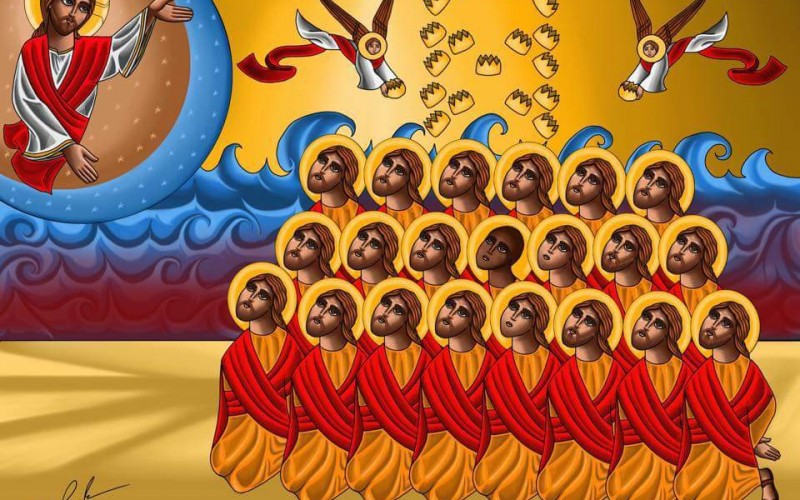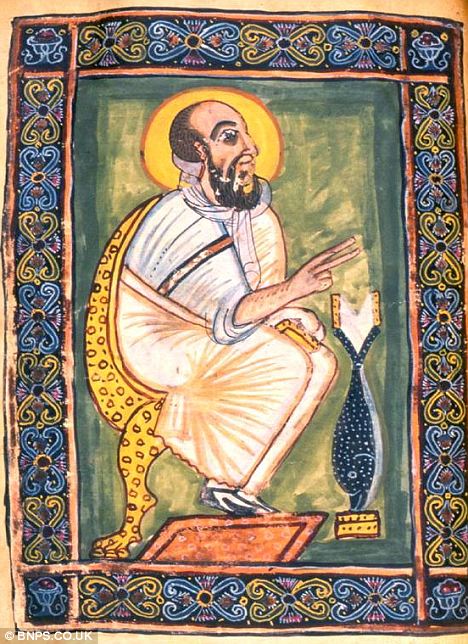June 15th - Venerables Apollinaris de Almeida, SJ, Hyacinth Franceschi, SJ, Francis Rodrigues, SJ
Ven Apollinaris de Almeida, SJ
Born : July 22, 1587
Died : circa 9-15 June, 1638
Ven Hyacinth Franceschi, SJ
Born : 1598
Died : circa 9-15 June, 1638
Ven Francis Rodrigues, SJ
Born : 1603
Died : circa 9-15 June, 1638

Apollinaris de Almeida was born in Lisbon, Portugal and studied with the Jesuits at St Anthony’s College in Lisbon. He entered the Society at fourteen and studied in Evora and Coimbra and then taught philosophy at St Anthony’s and later Scripture at Evora’s University. In 1624 when he was thirty-seven years old, King Philip III of Portugal named him bishop of Nicaea and coadjutor with right of succession to Afonso Mendes, patriarch of Ethiopia. Fr Almeida wrote to the king twice asking him to reconsider the appointment as he felt unworthy of the honour because as a Jesuit he has to refuse ecclesiastical dignities. However he finally acquiesced because of the royal command.
Bishop Almeida set out for India in April 1628 after his consecration in Avora but adverse winds delayed his departure and he finally set foot in Goa, India in Oct 1629. Later he arrived in Massawa, an island off Ethiopia on August 20, 1630. He spent his first few months gathering information on the life and virtues of Patriarch Andrew de Oveido who had died there in 1577 and also investigated the death of Fr Abraham de Georgiis, martyred at Massawa in 1595.
Bishop Almeida was formally introduced to Negus (Emperor) Susenyos on Dec 16, 1630 and thereafter began his ministry in Dancaz, the capital. The Negus was converted to the Catholic faith by Fr Pedro Paez in 1622 and the Jesuit mission had prospered as he gave the Jesuits land and residences and built them a seminary to educate native clergy. The Negus was however aware that his acceptance of the Catholicism was the main cause of the country’s unrest and internal difficulties. So in July 1632, he abdicated his throne in favour of his son, Fasilidas, and allowed the nation to revert to its former belief that Christ had but one nature. This turnabout of the Negus marked the eventual demise of the Jesuit mission in Ethiopia. After the death of Susenyos in 1632, Fasilidas repossessed the properties and houses that his father had given the Jesuits and in 1633 ordered the missionaries to assemble at the HQ in Fremona and there to be expelled.
 Bishop Almeida and six missionaries went underground when they heard of the expulsion order while the others returned to India. The Bishop and Fr Hyacinth Franceschi found safety with a Catholic Ethiopian statesman, Cafla Mariam.
Bishop Almeida and six missionaries went underground when they heard of the expulsion order while the others returned to India. The Bishop and Fr Hyacinth Franceschi found safety with a Catholic Ethiopian statesman, Cafla Mariam.
Fr Franceschi, an Italian was born in Florence and had entered the Society in Rome in 1614. He had long desired to be a missionary and after his study in Coimbra he left for Goa in 1618 where he completed his Jesuit formation. He learnt Amharic, the native language and after he gained fluency he did pastoral work in the provinces of Tigre, Dambea, and Begameder. His labours resulted in many conversions, mostly from the educated class. He moved to Fremona, the Jesuit’s HQ and continued his ministry. When Bishop Almeida’s and Fr Franceschi’s presence began to cause difficulties for their host, they moved into the desert in Defalo, close to the Red Sea and hid in the thick underbrush. They suffered hunger and heat for four months until they were rescued by a Portuguese, whom Fr Francis Rodrigues had sent in search of them. While Fr Franceschi stayed with a neighbouring landowner, Bishop Almeida joined Fr Rodrigues to stay with Joanes Akay, governor of a coastal province and a friend of the Portuguese.
Fr Rodrigues was born in Carnide, Lisbon and as a youth had been a student of Bishop Almeida. He entered the Jesuit novitiate at Coimbra in 1618 and left Portugal for the mission in Ethiopia in 1628 where he spent most of his ministry in and around Dancaz and was put in charge of the construction of the new Catholic cathedral.
Bishop Almeida and Fr Rodrigues were apostolically active and were able to freely minister to the Catholics while seeking refuge with Akay. The bishop was also able to investigate the deaths of Frs Gaspar Pais and John Pereira, whose martyrdoms had occurred in 1635. Fr Franceschi however had virtually been made a prisoner by his host as he was put in a tiny hut which he could leave only at night and was given little food and not allowed to see anyone. He tolerated this harsh solitude for a year and left to join his two Jesuit brethrens at the Akay estate when he could not endure it any longer.
When Fasilidas learnt that Akay was giving shelter to the missionaries, he offered him a pardon in exchange for the prisoners. Thinking that the emperor would permit the missionaries to leave the country and out of fear for his life, Akay delivered the missionaries to the emperor who then had them imprisoned in a monastery in Lake Tana. After the missionaries had been chained for a year the emperor yielded to the schismatic monks’ entreaties and permitted the missionaries to be executed. The three Jesuits were led to Oinadega in Dambea and were hanged from a tall tree while a fair was in progress. The people attending the fair joined in throwing stones at the suspended bodies.
The exact date of the martyrdom of these three Jesuits was not known but it took place in the first half of June 1638. Patriarch Mendes writing to Rome noted that the martyrdom took place between the 9th and the 15th of June 1639. Their cause for beatification, together with five other Jesuits martyred in Ethiopia, was introduced in Rome in 1902.
